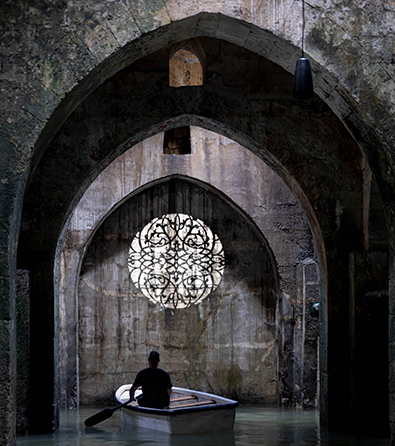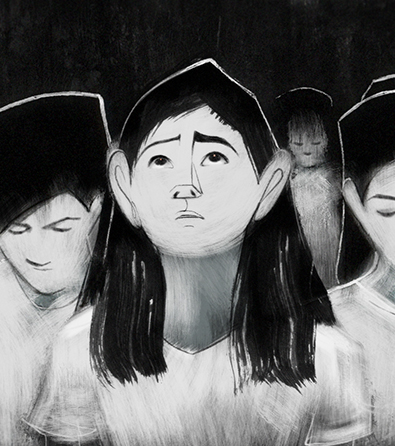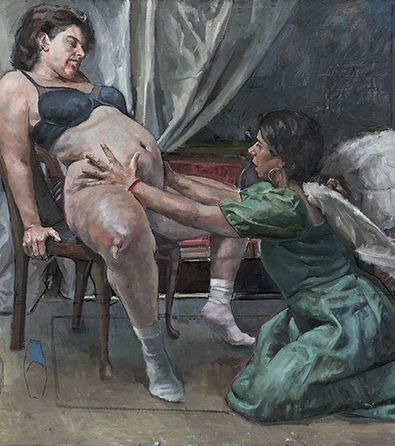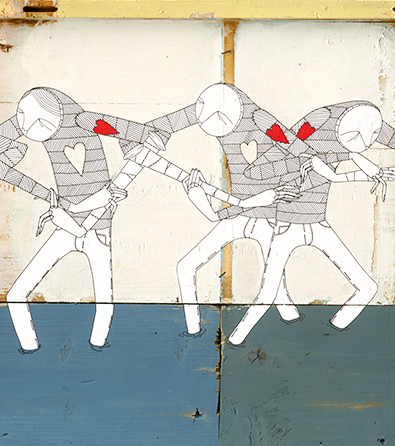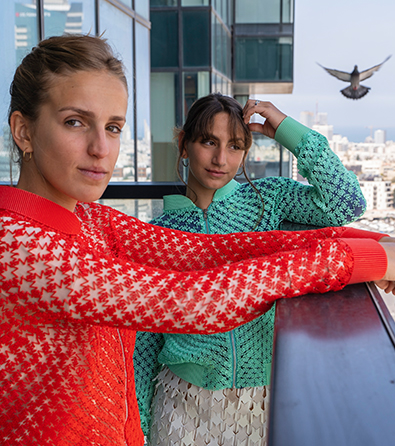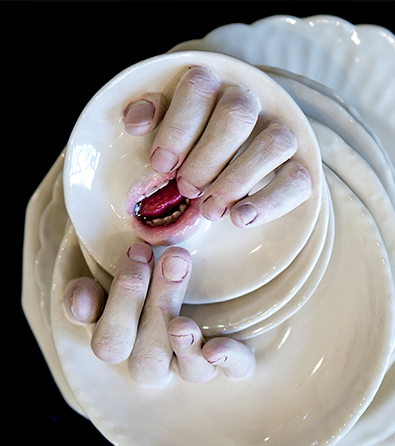The short film Studio Visit with Michal Heiman is available to watch at the top of the page.
* To watch this film, please approve YouTube/Vimeo cookies via the blue cookie icon at the bottom left of the screen.
Michal Heiman, a renowned multidisciplinary artist, respected photography researcher, and fierce advocate for women’s rights, uses her craft to explore complex social issues. Her solo exhibition at Herzliya Museum underscores this commitment. The exhibition houses an installation encapsulating a profound journey of research and creation sparked by Heiman’s encounter with a striking photograph from the 19th century found in the book “The Face of Madness.”
“The Face of Madness” is a seminal book by the art historian and curator Hugh Honour. The book, published in 1973, highlights the revolutionary work of Hugh Welch Diamond, a British psychiatrist and photographer. Diamond believed that the camera could function as a clinical tool, capturing ‘the face of madness.’ The book features his photographic work in the Surrey County Lunatic Asylum, where Diamond served as the superintendent in the mid-19th century. He was one of the pioneers advocating the idea that mental illnesses could be diagnosed based on a patient’s facial expressions, thereby championing the therapeutic use of photography. Diamond’s work stands as one of the earliest instances of employing photography in psychiatry.
In this 19th century, social and medical perspectives on mental health were vastly different from today’s understanding. Asylums like the Surrey County Lunatic Asylum housed individuals diagnosed with a range of mental health disorders. Women found themselves committed to these asylums for various reasons. While some genuinely suffered from severe mental health issues, like schizophrenia or severe postpartum depression, others were committed due to misdiagnosed conditions, such as menopause or epilepsy. At times, social pressures and constraints forced women into these asylums—those who defied social norms, bore children out of wedlock or were deemed a ‘nuisance’ to their families.
The conditions in these asylums were often abhorrent, known for their poor living conditions and harsh treatment. The haunting photographs in “The Face of Madness” are a chilling testament to this time.
Upon encountering one such photograph of a woman bearing a striking physical resemblance to herself, Heiman felt a compelling urge to delve deeper. Her research sought to understand why the women featured in “The Face of Madness” were labeled as mentally ill and explore how the book’s themes correspond with ongoing issues of gender inequality.
In the accompanying video, Heiman navigates the intricate intersections between psychoanalysis, photography, and human rights, further elucidating her work’s context and intent. This insightful discourse invites us to reflect on the dark chapters of mental health history and the unending struggle for women’s rights.
The featured video Studio Visit with Michal Heiman is part of the web series Yotsrim by Shachaf Dekel. Yotsrim includes five seasons and 73 episodes. The series won the Best Documentary award at the NYC Web Fest in 2019.

